NEEM (The North Greenland Eemian Ice Drilling http://neem.dk/) was an international ice core research project aimed at retrieving an ice core from North-West Greenland (camp position 77.45°N 51.06°W) reaching back through the previous interglacial, the Eemian. The project logistics is managed by the Centre for Ice and ClimateThe average weather over a particular region of the Earth. Climate originates in recurring weather phenomenon that result from specific types of atmospheric circulation., Denmark, and the air support is carried out by US ski equipped Hercules managed through the US Office of Polar Programs, National Science Foundation.
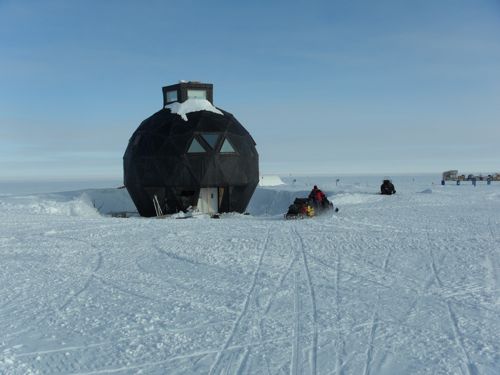
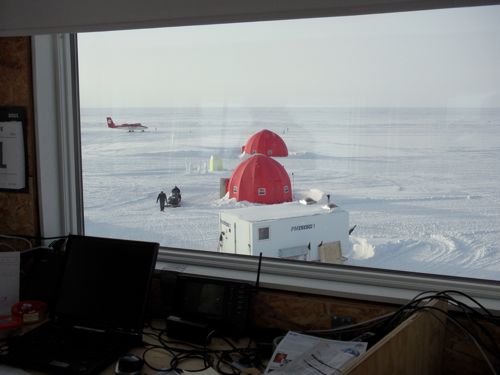
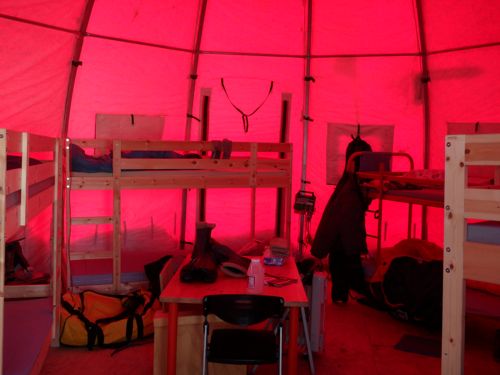
Sleeping in the tent at NEEM was pretty cool. It was not the single person Arctic Oven I thought it was going to be. It was actually a very large, dome shaped tent. There were four sets of bunk beds with very nice sleeping pads. I had the bunk closest to the door and I was afraid I would get most of the draft during the night, but that was not the case. I slept very well, except for a bathroom break at 4:30am. That’s the tough thing about sleeping in a tent in the arctic; there are no bathrooms in the tent! So, I had to put on a layer of clothes, walk to the nearest potty and take care of business. Then, walk back to the tent, get undressed and zippered back up in the fleece liner and goose-down sleeping bag. FYI – The potties do not have heat either, so you basically have to sit on a piece of Styrofoam carved into the shape of a toilet seat. Below that is a giant hole with a sight that I can’t describe with words except GROSS!
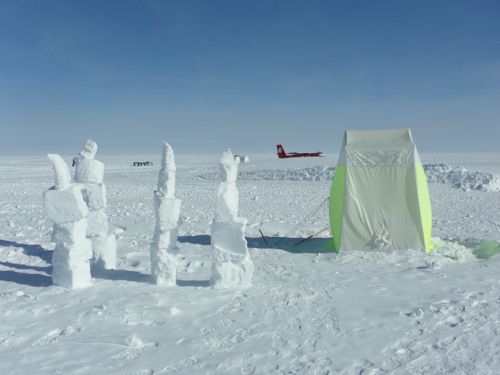
Wake up was at 7:30am. I made my way to the main building and had a very filling breakfast consisting of toasted bagels with peanut butter and honey with a side of dried cherries and cranberries. The Danish camp manager, JP, thought it was very strange to eat peanut butter for breakfast, until he tried it, then he said he could tolerate it! Two cups of coffee and I was ready to go!
At our morning meeting, we were advised that the weather would begin to degrade in approximately 48 hours. So that meant we had to really buckle down and get to all of the stations in the next two days. After the pilots refueled the plane, we were on our way to the first station. As we got closer to the GITS AWS station, we could see the once clear skies were now cloudy. The pilots circled the area where the station was located, but could not see the snow surface. We had to abort the first station due to the poor visibility. On to Humboldt, approximately 35 minutes away.
Humboldt AWS was the next station to be serviced. This station would need a new battery, one new sonic sensor to measure snow height and the downloading of data from the data logger. It also needed to be realigned so that the solar panels would be able to recharge the batteries.
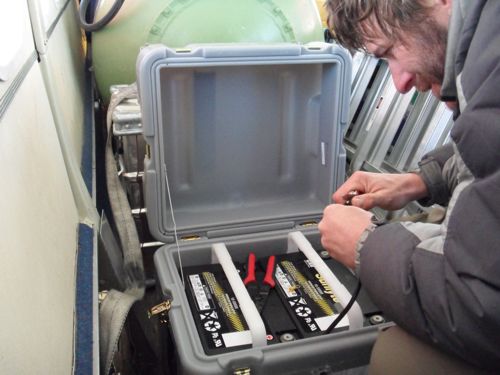

This job only took a couple of hours and we were off to the final station at Petermann glacier, the most northern AWS at 80 degrees north, only a few degrees from Santa’s workshop! I hope to get a sighting of him or his helpers when we are in the air. I think I saw something in the distance, but was not sure if it were mountains or the North Pole establishment!
When we arrived at Petermann, I was shocked to see how high the data boxes were. Koni informed me that there is more melting occurring at this location, so we must lower the station before the current mounting pole falls over. When we arrived, we dug out the battery box to see why there was no power at the station. To our surprise, the battery box had become submerged in water during last summers melt and the water froze inside, expanding and ultimately destroying the batteries. Koni installed temporary batteries, enough to store data. Next year, he will return to install new, permanent batteries that will be powerful enough to transmit the data via satellite link.
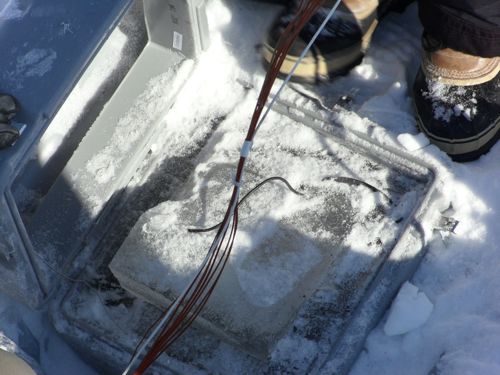
Nikko was eager to begin drilling the ice with the specially designed ice drill. It cuts through the ice in 1-meter increments and then the driller must pull out a section of the core before drilling deeper. The goal was to drill 4.2 meters deep.


It took much longer than expected and we were now behind in rewiring the station. Once the drilling was complete we assembled the tripod and maneuvered it over the station. We then raised the station off of the current support and lowered it onto the new lower support.
Koni and Simon immediately got started with the installation of the new data logger while I installed a new satellite antenna. The antenna required some onsite engineering to attach it to the station. I quickly came up with an alternative mounting idea and we went to work getting it installed.
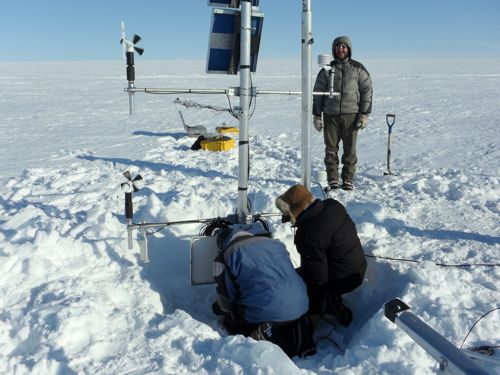
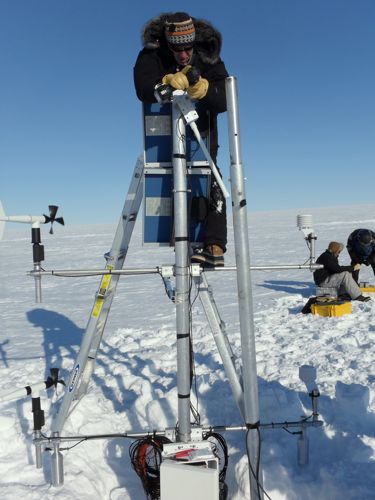
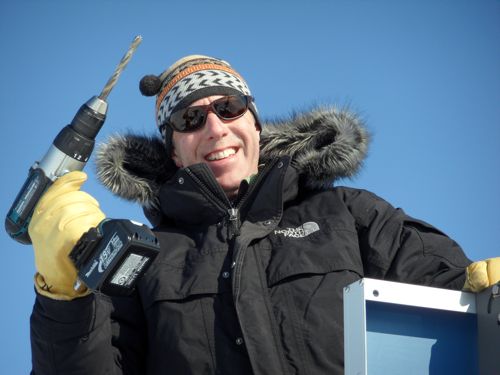
Shortly after we were finished, Koni and Simon were finished also. Koni checked the data and acquired a precise location with the GPSA Global Positioning System (GPS) is a satellite-based navigation system used to track the location or position of objects on the Earth’s surface. and we were off, back to NEEM. Time – 9:40PM.
The flight back to NEEM was a quite one, as everyone was exhausted and ready to eat some dinner. Plus, that was the third day in a row we did not finish working until after 9pm. I guess when the sun is up for 24 hours; you really need to take advantage of it in the Arctic!

Tomorrow we get to sleep in (a little) and then pack everything for our next leg of the Northern Traverse. Until tomorrow, good night from NEEM!


Comments